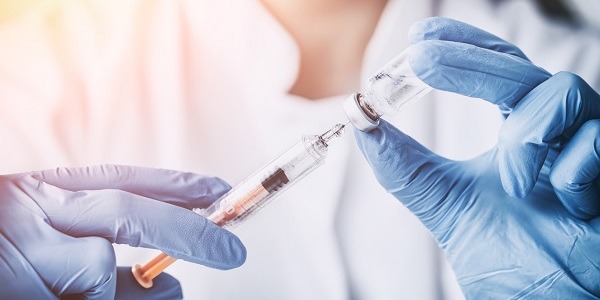Standards and safer syringes

There are many reasons to enhance the safety of administering injections. The price and chronic shortage of medical supplies force desperate measures, which include reuse of single-use injection equipment. Moreover, scientific studies reveal that administering injections is not only a risk for medical personnel but also for ancillary staff such as cleaners, laundry workers or laboratory technicians.
In an attempt to reduce the risks of injury and disease transmission, the WHO launched in 2015 a new policy on injection safety, calling on the international community to switch to safety-engineered syringes, whenever appropriate, by 2020. It issued highly detailed injection safety guidelines, which outlined a number of safety features for syringes that not only protect the recipient of the injections, but the healthcare worker who administers them as well.
The WHO stressed that the transmission of infection is not just limited to developing countries as reuse of syringes occurs in many places. “Adoption of safety-engineered syringes is absolutely critical to protecting people worldwide from becoming infected with HIV, hepatitis and other diseases. This should be an urgent priority for all countries,” said Dr Gottfried Hirnschall, Director of the WHO HIV/AIDS Department, in a press release issued at the time the guidelines were launched.
Published in 2015, the WHO guidelines on the use of safety engineered syringes for intramuscular, intradermal and subcutaneous injections in healthcare settings provides basic rules forsyringes with “sharps injury protection” features. It defers to thedefinitions of ISO 23908, Sharps injury protection – Requirements and test methods – Sharps protection features for single-use hypodermic needles, introducers for catheters and needles used for blood sampling, which provides internationally agreed minimumstandards to reduce the risk of injury from sharps. In addition, theISO 7886 series, which specifies properties and requirements forsterile single-use hypodermic syringes, also covers auto-disablesyringes (ISO 7886-3) and syringes with reuse prevention features(ISO 7886-4). This makes it a highly useful tool both for the manufacturersthat produce them and for users who can rest easy inthe knowledge that the syringes meet minimum requirements for quality and safety.
The WHO document references safety-engineered syringes according to their ISO definition to provide an exact characterization of the safety mechanism of each type of syringe and allow a common understanding between all guideline users. These ISO standards are updated regularly to ensure they continue to meet the needs of manufacturers and users, and take into account any new technologies that will contribute to reducing the risk of transmissible diseases.
But it doesn’t stop there. William Dierick, who initially led the standards development work on auto-disabling syringes as part of ISO technical committee ISO/TC 84, Devices for administration of medicinal products and catheters, says ISO’s expert committee on syringes is continually evolving and evaluating its work to develop standards that meet the needs of injection use in more and more settings. “We also have other standards that focus on the requirements for devices to be used by specific groups, such as visually impaired patients and certain age groups, ” he adds.
“Whatʼs more, our standards were originally focused on devices for use by healthcare professionals, but with the increased number of devices for self-administration, we decided to expand the work to include pen-injectors, auto-injectors and body-worn injectors. This will lead to more efficient and convenient administration of the medicinal products, with great benefits for healthcare systems and patients.”
All of this bodes well for countries as they approach the WHO’s 2020 deadline, urging them to transition to safety-engineered syringes whenever appropriate. It also paves the way for achieving some of the UN’s Sustainable Development Goals while saving lives in countries where the reuse of syringes remains high.
This article is an excerpt from the March-April 2019 edition of ISOfocus
Request more information today for a call back from a member of our sales team so that you can get a better understanding of how Compliance Navigator can meet your needs.
The Compliance Navigator blog is issued for information only. It does not constitute an official or agreed position of BSI Standards Ltd or of the BSI Notified Body. The views expressed are entirely those of the authors.

